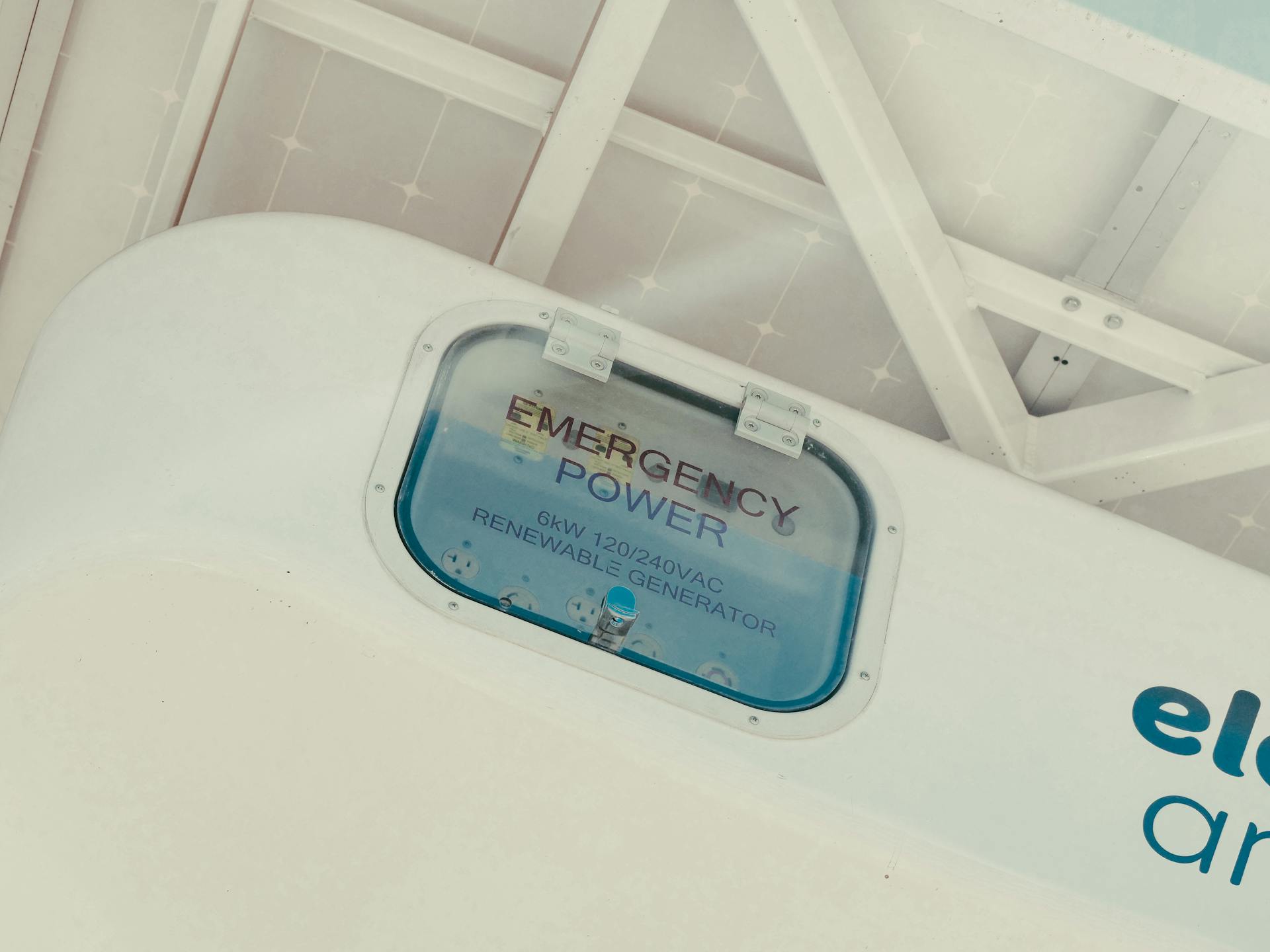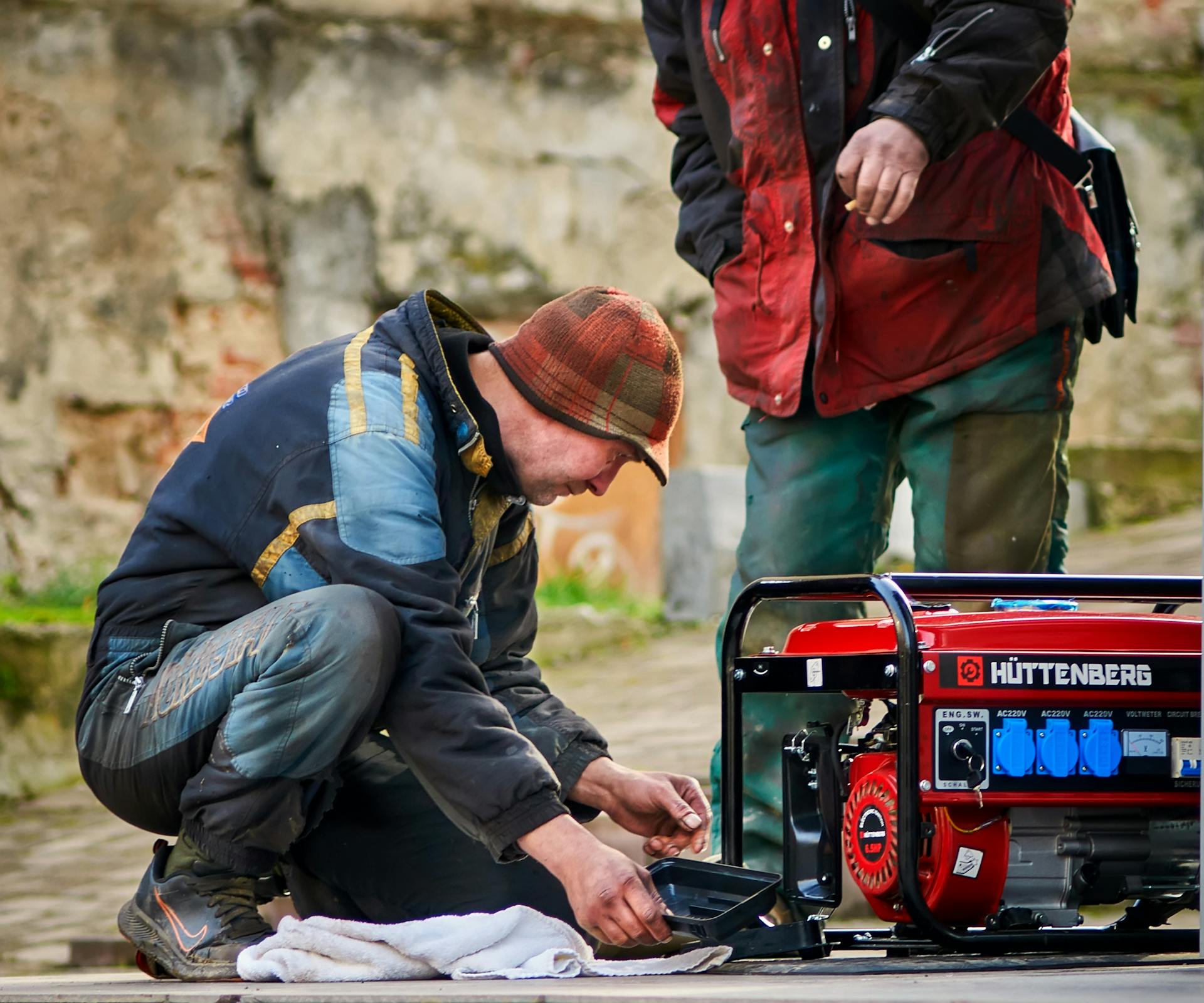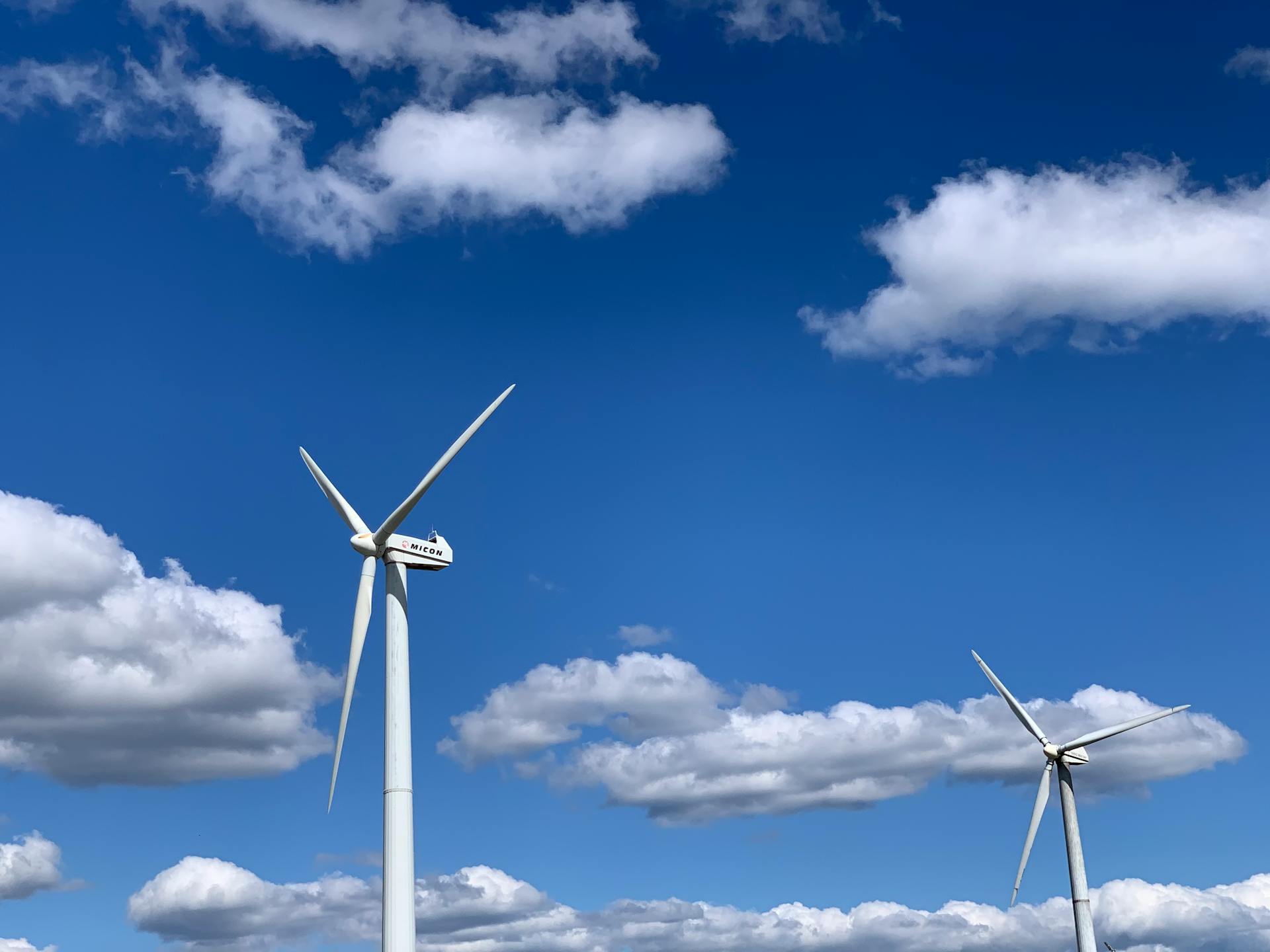
AC generators produce a rotating magnetic field that induces an alternating current in the windings, while DC generators use a stationary magnetic field to generate a direct current.
AC generators are more efficient and can produce higher power levels, but they require a complex system to convert the AC power to DC power for use in electronic devices.
In contrast, DC generators are simpler and more reliable, but they are generally less efficient and can only produce lower power levels.
The choice between AC and DC generators depends on the specific application and requirements, but AC generators are often preferred for their higher efficiency and power output.
What Is a Generator
A generator is a machine that converts mechanical energy into electrical energy. It's a pretty cool device that helps us power our homes, cars, and even our gadgets.
The electrical energy generated by a generator is in the form of an alternating current sinusoidal output waveform. This is because generators work on the principle of electromagnetic induction, which states that electromotive force -EMF or voltage – is generated in a current-carrying conductor that cuts a uniform magnetic field.
Explore further: How Electrical Generators Work
Generators have various components, including a field, armature, prime mover, rotor, stator, and slip rings. These components all work together to convert mechanical energy into electrical energy.
The principle of electromagnetic induction is the foundation of how generators work. It can be achieved by rotating a conducting coil in a static magnetic field, or by rotating the magnetic field that contains the stationary conductor.
A different take: Components of Dc Generator
Types of Generators
Generators come in different types, each with its own unique characteristics.
There are two main types of generators: AC and DC.
AC generators, also known as alternators, produce alternating current.
DC generators, also known as dynamo, produce direct current.
AC generators are widely used in power plants and industrial settings due to their efficiency in converting mechanical energy into electrical energy.
DC generators are commonly used in automotive applications, such as in cars and trucks, due to their ability to produce a stable voltage.
Additional reading: Can a Ac Motor Be Used as a Generator
Portable generators are also a type of AC generator, designed for use in emergency situations or outdoor events.
Permanent magnet generators use a permanent magnet to produce a magnetic field, resulting in a more efficient and reliable output.
Induction generators use electromagnetic induction to produce a current, making them a popular choice for wind turbines and hydroelectric power plants.
Synchronous generators use a rotating magnetic field to produce a current, making them suitable for high-power applications such as power plants.
Asynchronous generators, also known as induction generators, use electromagnetic induction to produce a current, making them a popular choice for wind turbines and hydroelectric power plants.
You might enjoy: Induction Generator
How It Works
Alternating current, or AC, is produced by mechanical generators that convert kinetic or thermal energy into electricity using electromagnetic induction. This process is a fundamental aspect of how our electrical grid infrastructure works.
AC electricity's voltage reverses polarity, or changes direction, from positive to negative in fixed intervals measured by Hertz (Hz). Each Hz equals one positive cycle and one negative cycle.
In North America, the standard AC voltage is 110V @ 60 Hz, which means the current changes direction 120 times per second. This rapid oscillation facilitates long-distance electricity transmission, making AC the global standard for electrical grid infrastructure.
Direct current, or DC, power doesn't fluctuate in polarity or change direction like AC electricity. Instead, it has two poles (positive and negative) and current flows in one direction from the power source to a battery or DC-powered appliance.
DC electricity offers a constant flow of electricity, allowing it to charge solar or other types of batteries effectively. This makes it a popular choice for renewable energy systems.
An induction generator is a type of rotating device that uses electromagnetic induction to produce AC electricity. It's known as asynchronous because its speed is less than that of a synchronous generator.
AC vs DC Generators
AC generators are often used in remote areas because they don't require a transfer switch. However, this comes at a cost, as they incur high expenses to transfer electricity to remote sections of the grid.
Intriguing read: Manual Transfer Switches for Portable Generators
AC generators generate AC electric power, which is easily distributed and transmitted. They use transformers to distribute AC voltage. In contrast, DC generators produce DC electric power, which is more difficult to distribute.
AC generators have slip-rings, while DC generators have split-ring commutators. This difference in design affects the current induction in each type of generator. AC generators can induce current in either the rotor or the stator, whereas DC generators induce current only in the rotor.
DC generators have commutators, which allow the current to flow only in one direction. This is in contrast to AC generators, which have no commutators and allow the current to reverse direction periodically.
AC generators are more efficient than DC generators, with less energy loss. However, DC generators require less maintenance than AC generators, as they don't need as much upkeep.
Here's a comparison of AC and DC generators in a table:
Generator Basics
An AC generator converts mechanical energy into electrical energy in the form of alternating current.
AC generators work on the principle of Electromagnetic Induction, which is also the principle on which AC generators work.
The coil through which current flows in an AC generator is fixed, and the magnet usually moves, creating an alternating current.
The electrical energy generated by an AC generator is in the form of an alternating current sinusoidal output waveform.
AC generators are typically powered by steam turbines, gas turbines, and combustion engines, which supply mechanical energy.
The various components of an AC generator include field, armature, prime mover, rotor, stator, and slip rings.
The principle of Electromagnetic Induction is the same principle on which AC generators work, and it states that electromotive force or voltage is generated in a current-carrying conductor that cuts a uniform magnetic field.
On a similar theme: Dc Electromagnetic Generator
What Is a Generator?
A generator is a machine that converts mechanical energy into electrical energy.
Generators work by using the principle of electromagnetic induction to produce electricity.
There are two main types of generators: AC generators and DC generators.
An AC generator, also known as an alternator, converts mechanical energy into electrical energy in the form of alternating current.
A DC generator, on the other hand, converts mechanical energy into DC electricity, using the principle of energetically induced electromotive force.
In simple terms, AC generators produce electricity that constantly changes direction, while DC generators produce electricity that flows in one direction.
Related reading: Does a Generator Produce Ac or Dc
Basic Uses & Design
AC generators power home electrical appliances and small motors like juicers, vacuum cleaners, and food mixers. They're perfect for everyday household use.
DC generators, on the other hand, power large electric motors in subway systems, providing reliable energy supply.
In an AC generator, the coil is fixed and the magnet moves, creating an alternating current as the south and north poles switch directions.
The coil in a DC generator motor rotates in a fixed field, with the two ends attached to a commutator that balances charges to and from the generator.
This design results in a current that doesn't alter direction, making DC generators ideal for charging batteries used in off-grid systems.
If this caught your attention, see: Direct Current Electric Generator
Sources
- https://byjus.com/physics/difference-between-ac-and-dc-generator/
- https://www.powerplus.com/industrial-power-blog/industrial-ac-dc-generators-whats-the-difference/
- https://blog.ecoflow.com/us/ac-vs-dc-current/
- https://www.bbc.co.uk/bitesize/guides/z8c7pbk/revision/3
- https://www.toppr.com/guides/physics/difference-between-ac-and-dc-generator/
Featured Images: pexels.com


